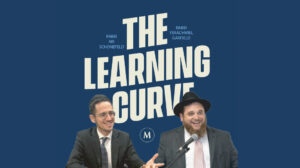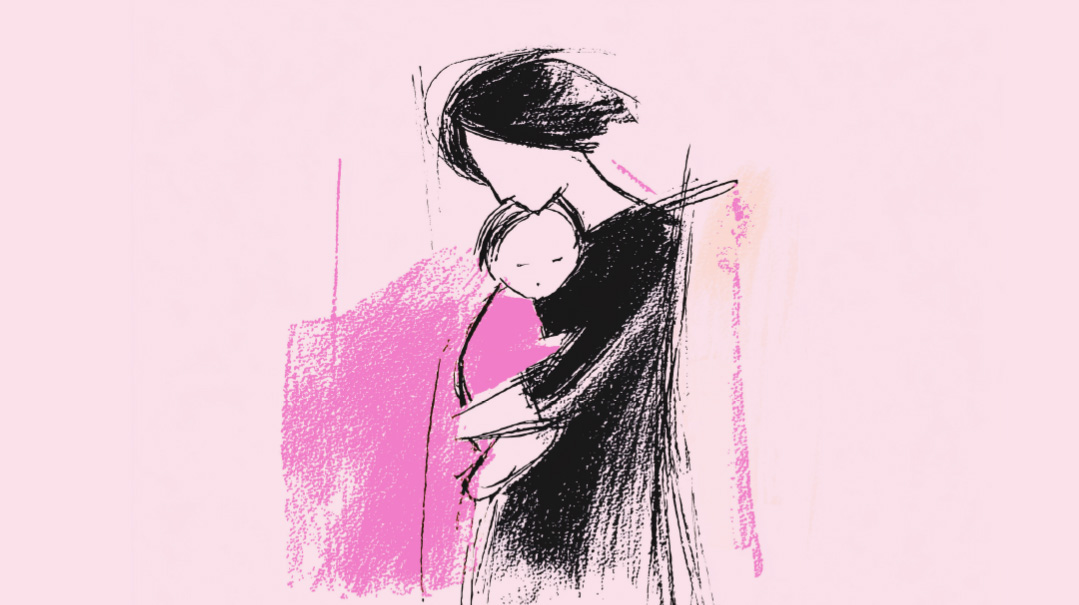In Favor
| August 28, 2019When it comes to a teacher’s feelings, not all students are equal

It’s the great paradox of teaching: The students are both the profession’s greatest joy and its largest source of frustration. Mixed feelings may be teaching’s professional hazard, but 85 percent of teachers say they chose this job to make a difference in the life of a child. This is why so many have strategies they use to help them get past their instinctive feelings and maintain fairness and consistency in the classroom.
Of Fairness and Favoritism
Perhaps as a generational response to the harsher education styles with which they were raised, today’s parents want their children to have warm, positive school experiences. Years ago, that wasn’t a priority.
“My teachers didn’t love us. They loved our neshamos,” says Chava, a veteran teacher in the Bais Yaakov system, who was a student decades ago. But with the pain of her teachers’ attitudes still fresh in her mind, Chava strives to ensure that she shows all of her students that she loves them — and that she doesn’t show any one student any more love.
While she likes many of her students — and often keeps in touch with her students well beyond their high school years — she keeps their relationship restrained while they’re still students in her classroom. “I don’t want the class to say, ‘Oh, you love her.’ ”
If she finds herself focusing on one student over the rest, Chava tries to compensate by giving another student extra attention. “I make an effort to single out a girl I don’t have much to do with, and show her warmth too, so the class doesn’t get upset. I’ll make an effort, because it’s an achrayus to be fair.”
Some students effortlessly draw a teacher’s attention with their charm, chein, or personality. Others are easy to like because they’re attentive and take careful notes, as opposed to checking their watches or doodling to pass class time. A teacher may find her eyes drawn to those students, making eye contact with them, teaching to and answering a larger portion of their questions.
Suri, who’s been teaching high school for close to 30 years, agrees that student participation can affect the way a teacher feels about them. She thinks favoritism could play out when she grades papers but she says it isn’t only the girls she likes who benefit. “If a girl is proactive, or participates, I’ll mark her paper more patiently, trying to interpret her answers positively. I’ll do it for any hardworking student, not only one that I like.”
“You can’t have favorites in high school,” she says, but there are students who command more attention, sometimes unintentionally. She recalls two students who were so engaging that the entire class smiled when they talked. Suri believed their participation enhanced her lesson. “I couldn’t help but call on them.”
Suri also remembers Shevy, who always seemed so glad to see her. When Shevy started researching seminaries, she sought out Suri for advice, even though she had been her teacher two years prior. Then, when Shevy wasn’t accepted to the seminary of her choice, Suri made some calls on her behalf, unasked. “She made me feel like I was her favorite teacher, so I went the extra mile for her.”
Then there’s the student she had difficulty with at the start of the school year. Suri had a conversation with the student; and straightened things out. The situation improved, and while she never made her feelings obvious in the classroom, she openly admits she’s “nuts about” her. “I’m holding onto her for my son. I hope someone will suggest it.”
While students often complain that it’s unfair to them when a classmate is favored, Tzivie, a high school principal with 30 years of classroom experience, notes that often, the favored student also suffers. She remembers Leah, a second-grade student who was popular with both her classmates and teachers. Her teacher loved her so much, she’d praise her often, and in front of the entire class. Tzivie cautioned her, telling her it was unwise to give so much attention to one student, but the teacher brushed her off.
Months later, at the end of the school year, the teacher came back to Tzivie, saying Leah had developed an inflated sense of self, bordering on gaavah, and that the other students had begun to resent her.
“It’s a sticky situation when you have a student who has everything going for her,” Tzivie says. “Hashem blessed her with many gifts, but we need to treat her like everyone else. At the same time, if she does have a talent, you want to bring it out.”
Sometimes, though, a student’s situation does warrant extra attention from the teacher.
Even when the teacher doesn’t intend to play favorites, it can appear as though she is, causing hurt feelings or resentment in other students.
Rivka, who has been teaching limudei chol for more than 30 years, remembers a student who joined her high school against her parents’ wishes. Because she was aware of this student’s problematic home situation, she built a relationship with her. The student didn’t excel scholastically, but she shone in class, and Rivka responded positively to that.
At the end of the year, another student made a comment. “I called on that girl to answer a question, and the other student told me, ‘Of course you’d pick her. She’s your favorite.’ And she wasn’t. It was only because she was going through a hard time that I gave her the extra attention. I feel so bad. I wish I could turn to that girl now and ask her what I should do in the future. I was only trying to build a relationship so she would know there was someone who cared.”
Under My Skin
The flipside, of course, are the times when it’s hard for a teacher to show that she cares. Certain students seem to rub the teacher the wrong way — perhaps because they have real behavioral issues, or because they’re whiners, complainers, or students who ask questions about matters other students figure out on their own. “There are girls you don’t have a personality clash with, but they can make you nervous,” Tzivie describes.
Hadassa, a fifth-grade teacher, has found that it helps her to remember that everyone has talents and strengths. She recalls a student who was messy, disorganized, and didn’t focus during class; she also neglected her homework assignments. But this student was also very talented: She was a gifted writer and artist, and she used those talents to help other girls with book-report covers, posters for science projects, and she submitted wonderful entries for art competitions throughout the year.
Tzivie finds that when a student does something annoying or has behavioral issues, it can be effective to communicate through channels they understand. Years ago, she had a student from a dysfunctional home, whose behavior was often odd. One day, when Tzivie was teaching Chumash, she looked up and saw her student wearing a pair of glasses, the kind that has a big nose and a mustache.
“I looked at her, and I thought, I can get so upset, but I stopped, and realized this was a cry for help. She was quirky, so I needed to be quirky too. I said to her, ‘What a great mask, that’s amazing! Could you do me a favor? Right now I want you to put that in your briefcase, but I want you bring it for Rosh Chodesh Adar.’ I needed to validate her and replace her behavior with something else.”
It can help to try to learn more about why the student is behaving badly. “A child doesn’t act out for nothing,” Tzivie says. “There’s always a reason.” Some students are suffering from complex home situations or social or other personal issues.
Rivka recalls a particularly challenging sixth grader whom she taught as a student teacher. “She was mean and nasty and I couldn’t tolerate it,” Rivka admits. “The teacher training me told me that when you feel that way, you have to bend over backward.”
This is a lesson Rivka carries with her today in her high school classroom. “If I do run into trouble, it’s because I speak too sharply. I apologize either by writing a note, or by apologizing privately. If it was a public situation, I’ll apologize publicly.”
Tzivie says she’s adopted a protocol when it comes to a student who’s unusually irritating or has real behavioral problems. “First, I remember that Hashem created everyone b’ tzelem Elokim. If that doesn’t work, I focus on how I would treat her if she was my child. The third step is to find a solution. It’s my problem she’s getting under my skin, not her problem. I have to come up with a solution.”
Racheli, who teaches elementary school in Toronto, agrees that the one to take the initiative to solve the problem must be the teacher. “Always remember who’s the adult and who’s the child.”
Sometimes, though, even the best of efforts aren’t enough. Some students, despite the staff’s best efforts, will continue to engage in behavior that’s annoying and disruptive. It’s hard to look away, especially when the behavior is accompanied by a poor attitude and disrespect, even defiance.
Suri remembers a student she admits she found difficult to like. “She fought with me. She fought with every teacher. She had a group of friends who sat near her and encouraged her. Even the principal admitted she was difficult.”
The situation escalated to a point where there was a joint meeting between Suri, the student, and the principal. Suri says, “I told this student, ‘I’ll press reset. We’ll start again.’ I left her alone the rest of the year, but I couldn’t wait to finish the year. I gave her an opportunity, but nothing changed.”
Tolerating Less-Than-Perfect
It’s hard to swallow the idea that not all students are loved by all teachers, but if a teacher is compassionate and understanding, that might be enough. “Maybe there is something great about a reasonably benevolent presence — a teacher who is fair-minded with consistency and steadiness. Can we have tolerance for the less-than-perfect fit? I think we underestimate the power of that. There’s a lot kids can learn from less-than-perfect interactions,” says Zev Elman, a psychotherapist in Brooklyn.
Others, though, question the concept of the benevolent teacher, suggesting that personal struggles, be they difficult home situations or personality flaws, find their way into the classroom.
“Who knows how that plays out? And the kids feel it,” says Devorah, a social worker who works with students. She remembers a young teacher with several powerful personalities in the classroom, each with her own set of struggles. “The teacher possessed a great need to assert her authority, causing a lack of emotional attunement. She became angry and combative on a regular basis, and sent kids out for the slightest offense.”
If a teacher is unaware of her weaknesses, that can cause problems in the classroom, with a teacher favoring a student whom she naturally identifies with, or clashing with a student who doesn’t fill an underlying expectation. “I think some teachers do that because their own dynamics have not been worked through sufficiently, so they’re prone to idealize and devalue more intensely, “says Mr. Elman.
Tzivie agrees that teachers bring their personality kinks to class. “A teacher who is tense by nature, can be tense in the classroom,” she says. But in her experience, she says, the teachers experiencing difficult personal situations try very hard to leave their baggage at home. She remembers a teacher who once approached her and shared that she was going through a life-altering situation. Tzivie told her to take off a couple of days if she needed it, rather than let tension seep into the classroom.
“If there’s openness, then teachers know they can come to their principal and say this is going what is on in my life. They’re not at risk of losing their job, but can share and say ‘I’m doing my best, I need you on board,’ ” Tzivie says.
With the right attitude, Chava says, it’s possible to turn troubled relationships into close ones — but it takes work. She remembers a student who “got under her skin.” Her frustration upset her, and she discussed it with a co-teacher, who suggested Chava talk to the student. “For this to work, it has to be a two-way street,” Chava claims. “A student has to show a willingness to accept a teacher.”
In this particular case, Chava called the student aside, and told her, “For some reason you don’t like me and I have trouble loving you. Can we see if maybe we can do something? I’m going to try, and you have to try.”
It took a long time — eight months of hard work! — but by the end of the school year, they’d built a beautiful relationship.
Think Twice before Pointing Fingers
As teaching has evolved to include the role of mentor, counselor, and inspirer, teachers feel the pressure of high expectations. One hundred percent of teachers agreed they were enthusiastic about the job when they began teaching, yet only a little more than half felt this way during their actual career.
Teacher burnout is real, with nearly 50 percent of teachers leaving the profession within the first five years. Many factors contribute to burnout, including student behavior. It’s hard to look away from difficult behavior, and harder to respond to that behavior with love.
“We have responsibility to bring out the most we can. But the onus is not all on me. If a student is unreasonable and a mechutzaf, no, I don’t have to react with love,” says Chava, who has taught for several decades.
“It’s hard because teachers are’t therapists. There’s a whole room of kids to worry about. Probably there needs to be some tolerance for teachers’ annoyance, despite our scrutiny of their authority,” says Mr. Elman.
“The expectation today is that teachers need to be attuned to kids’ needs, but teachers aren’t equipped to offer that,” he explains. We expect teachers to have the feelings of a parent and the knowledge of a therapist. That isn’t realistic. It’s tempting to fault teachers for their negative emotions, and to point to them as the root of a student’s difficulties, especially when a student is acting out in the classroom, but that’s unfair.
“There’s a lot of sentiment out there because there are children with problems, and the first reaction has become to blame the rebbi, the teacher. I think it’s terrible,” says Tzivie. “When something goes wrong, teachers are terrified. They think, ‘How are they going to blame me for this?’ ”
Hours spent in the classroom can be intense, and teachers make valiant efforts to run effective classrooms, maintaining the right balance of discipline and warmth. Difficult situations need to be analyzed in their entirety, with students held accountable, and asked how they contributed to a deteriorating situation. Those around the teacher — the parents, administration, media, and community — must take steps to adequately support teachers.
“When you’re being sympathetic to teachers, a little understanding will go a long way. Teachers will say, ‘Look how much you’re giving me; I want to perform,’ ” says Tzivie.
There are countless stories we hear about teachers who ruined a student’s life. “Maybe we need to counteract that,” says Tzivie. For every negative story, there are many more positive ones, where a teacher had a positive impact on a student.
“Those are the stories we need to hear,” says Tzivie.
(Originally featured in Family First, Issue 657)
Oops! We could not locate your form.













